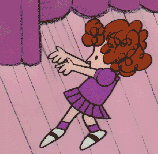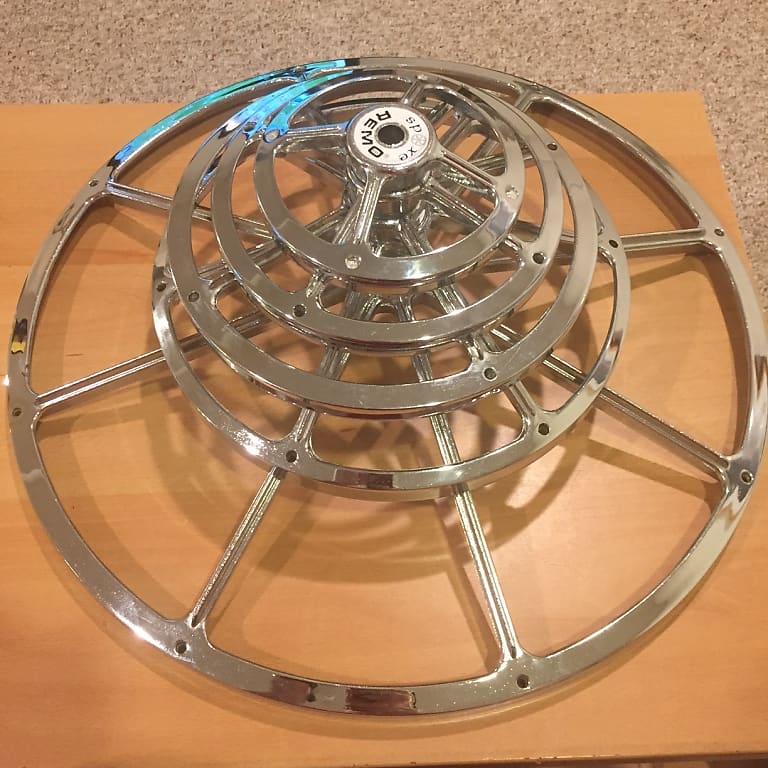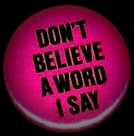Pat Blythe – Boom boom tsst……Part Two…..and music
…..and we’re back. Two weeks of incredible busyness. Last week, short of creating the 36-hour workday I just couldn’t get to either my column or the podcast…..which makes me very sad as I love working on both. Also wrapped up my first “in studio” interview and production with John Jamieson at Soundhouse Studio. I’ve recorded 12 interviews at Soundhouse and the very first with Tom Wilson was just released yesterday. To have it professionally mixed and mastered is beyond my wildest expectations. If I look back one year ago I would never, ever have guessed this is where and what I’d be doing today.
I’m continuing with my cymbal saga since there appears to be more to these stories that meets the ear…..or should I say the tsst tsst. Each musical instrument has their own personal tales of their beginnings to present day.
But first…..anatomy of a cymbal
Cymbal measurements are in diameter (inches or centimeters) and the various sizes produce different sounds. The larger, the louder, with a longer sustain. The weight of the cymbal depends on its thickness which is also critical to the sound it produces. The heavier, the louder, with better stick articulation and more “cut”. Thinner cymbals typically have a fuller sound, lower pitch and quicker response.
A standard cymbal size for the hi-hat was ten inches graduating to 14 inches until the late 1960s. Much smaller sizes were relegated to children’s kits. By the time hard rock in the 70s rolled around, drummers began using 15-inch hi-hats. Since then hi-hat sizes have fluctuated between the 12-14-inch ranges. In most setups, the bottom hi-hat cymbal is heavier; Fusion Hats have holes in the bottom cymbal, and some drummers use complete mismatched hi-hats from different manufacturers.
Then there’s the “bow”, the distance between the cymbal edge and the bottom of the bell…..referred to as the “profile”. This affects the pitch of the cymbal. The higher the profile (or bowl-shape), the higher the pitch. The Greeks used cymbals that were either cup or bell-shaped, the “cup” being what we refer to as the “bell”. So the deeper the cup or bell, the higher the profile, which means a higher pitch.
The birth of the hi-hat
There is an ongoing debate, even today, regarding who actually invented the foot pedal to clash two cymbals together, with stories going back to the early 1900s. The hi-hat wasn’t always part of a drummer’s kit and doesn’t appear on recordings until the very early 1930s. Prior to that, drummers used the snare drum to keep time using press rolls¹ or they estimated an open/closed, “spang-a-lang”-type pattern on a splash cymbal using two hands (one to strike and one to choke the cymbal).
According to Yamaha, “the original hi-hat consisted of two small cymbals attached to two boards, one on top of the other, joined with a hinge. The upper board was attached to the foot with a strap like a sandal, which made it look like a snowshoe, and thus it was called “the snowshoe.” When famous jazz drummer Baby Dodds was playing on a Mississippi riverboat, he tapped the floor with his left foot in tempo with the music, and seeing this, an enthusiastic fan fashioned a device that enabled him to clash two cymbals together using a foot pedal, which is said to be the beginning of the development of the hi-hat.” However, apparently Dodds claimed the device “interrupted the time flow of his press rolls” and so refused to add the device to his setup
left – Philly Jones, upper right – William “O’Neil” Spencer, lower right – Baby Dodds
The snowshoe is one story. Another story has a gentleman by the name of Skip Retherford as the inventor in 1922, which pre-dates Papa Jo Jones who is considered the earliest user of the hi-hat. Jones’s method of “timekeeping ride rhythms while striking the hi-hat as it opened and closed inspired the innovation of the ride cymbal.” Then there’s drummer William “O’Neill” Spencer who Philly Joe Jones saw in a club in Philadelphia in 1943. Jones was using the low-hat and claims O’Neill was the one who invented the hi-hat. Other names pop up such as Kaiser Marshal. Finally, hi-hats raised up, that could be played by hand and foot may have been developed in 1926 by Barney Walberg of the drum accessory company Walberg and Auge. The company published an ad for their Universal Cymballam in 1927. Whoever was the first, there’s no disputing Papa Jones was the first to use brushes on drums and shifting time keeping from the bass to the hi-hat, providing a “swing-pulse focus”.
From low to hi
After the snowshoe came the clangers, small cymbals mounted onto the rim of the bass drum that were struck with your hand or arm on the bass pedal. This was followed by the shoes, a hinged board with cymbals attached on the ends. Then there was the sock cymbal which was mounted at ground level with a spring-loaded foot apparatus. This was invented to allow one drummer to play multiple percussion instruments. Eventually they were mounted on short stands known as low boys. They slowly reached higher and higher and evolved into high sock cymbals which we now call the high/hi-hat today.
Slowly evolving over time, the bar was raised (so to speak) and the low-boy became the high-sock which became the hi-hat. Now it sits conveniently to the left or right of the snare, in a spot where the drummer’s foot can comfortably reach the pedal. No drum kit is complete without it. The sound of the hi-hat can be changed by the drummer adjusting the gap between the two cymbals or controlling them with the pedal. They can be struck with a drumstick, a brush, the hand or simply clashed together with foot.
Remo Spoxe Hi-Hat
We now have the X-hat (fixed, closed or half-open hi-hats), cable-controlled or remote hi-hats, and the Triple Hi-Hat (Sabian). Drop-clutches are used to lock and release hi-hats when both feet are used playing double bass drums. There are non-cymbal hi-hat pedals such as the Shekere hi-hat or the Remo Spoxe hi-hats (now considered vintage) created by Terry Bozzio in the late 1980s.
Every drummer has their own style when playing the drums. It’s no different with the hi-hat. How and when a drummer uses the hi-hat, or how they strike the hi-hat cymbals, is as individual and distinct as the drummers themselves. Ringo uses a sort of sweeping method. He swipes them rather than striking them dead on. Roger Taylor includes the opening of the hi-hat on every backbeat for rhythm emphasis, leaving the hi-hat slightly open when he hits the snare. Opening the hi-hat on first and third beat before hitting the snare is one of his trademarks. Charlie Watts does not play the hi-hat in unison with the snare at all. Sometimes, the most memorable sound in the song is the sound of the hi-hat.
The story behind behind Incense and Peppermints….California surfer boy (‘cause that’s exactly what he looks like) and drummer Randy Seol created the most famous tsst tsst in history as far as I’m concerned. Also, notice all the cords and amps in this video!!! This is probably my number 2 most favourite all-time song. Trivia time…..the “voice” or singer who actually recorded Incense and Peppermints was a 16-year-old name Greg Munford.
From Pop Expresso, “when it came time to record the vocal tracks, none of the members of the Alarm Clock sounded right for the lead vocal and Greg was picked to try it, he end up singing the lead vocals for what became their biggest hit and most memorable song, the Psychedelic classic “Incense And Peppermints”. However, despite the fact the song peaked to No.1 on the Hot 100 (the only Strawberry Alarm Clock No.1) Munford never officially joined the band.”
Incense and Peppermints – Strawberry Alarm Clock
Teen Town – Weather Report (ft Jaco Pastorius on drums)
Mellow Yellow – Donovan
Theme from Shaft – Isaac Hayes
You Make Loving Fun – Fleetwood Mac
Mr HiHat – Steve Smith
Liar – Queen
Roxanne – The Police
Red Rain – Peter Gabriel
I Wanna Hold Your Hand – The Beatles
I Feel Free – Cream
Chuck E’s In Love – Rickie Lee Jones
This week’s podcast is Tom Wilson (Junkhouse, Blackie and The Rodeo Kings, Lee Harvey Osmond), author of Beautiful Scars and indigenous artist. This is my first podcast recorded, mixed and mastered in a recording studio. Many thanks to John Jamieson at Soundhouse Studio.
https://luvthemusic.podbean.com
Cheers:
¹A drum roll (borrowed from marching band drumming) formed by a series of double-strokes of the drum sticks; the press roll is often used to end a phrase.
All photographs of Tom Wilson are ©2015, 2019, 2021 A Girl With A Camera “The Picture Taker”
=PB=
Pat’s column appears every Wednesday.
Contact us at: dbawis@rogers.com
“Music and photography….my heart, my passions.” After an extended absence — 33 years as a consultant and design specialist in the telecommunications industry — Pat has turned her focus back to the music scene. Immersing herself in the local club circuit, attending the many diverse music festivals, listening to some great music, photographing and writing once again, she is eager to spread the word about this great Music City of ours…..Toronto.

Together for 34 years, Pat also worked alongside her late husband Christopher Blythe, The PictureTaker©, who, beginning in the early 70s, photographed much of the local talent (think Goddo, Frank Soda and the Imps, BB Gabor, the first Police Picnic, Buzzsaw, Hellfield, Shooter, The Segarini Band….) as well as national and international acts. Pat is currently making her way through 40 years of Chris’s archives, 20 of which are a photographic history of the local GTA music scene beginning in 1974. It continues to be a work in progress. Oh…..and she LOVES to dance!










Leave a comment